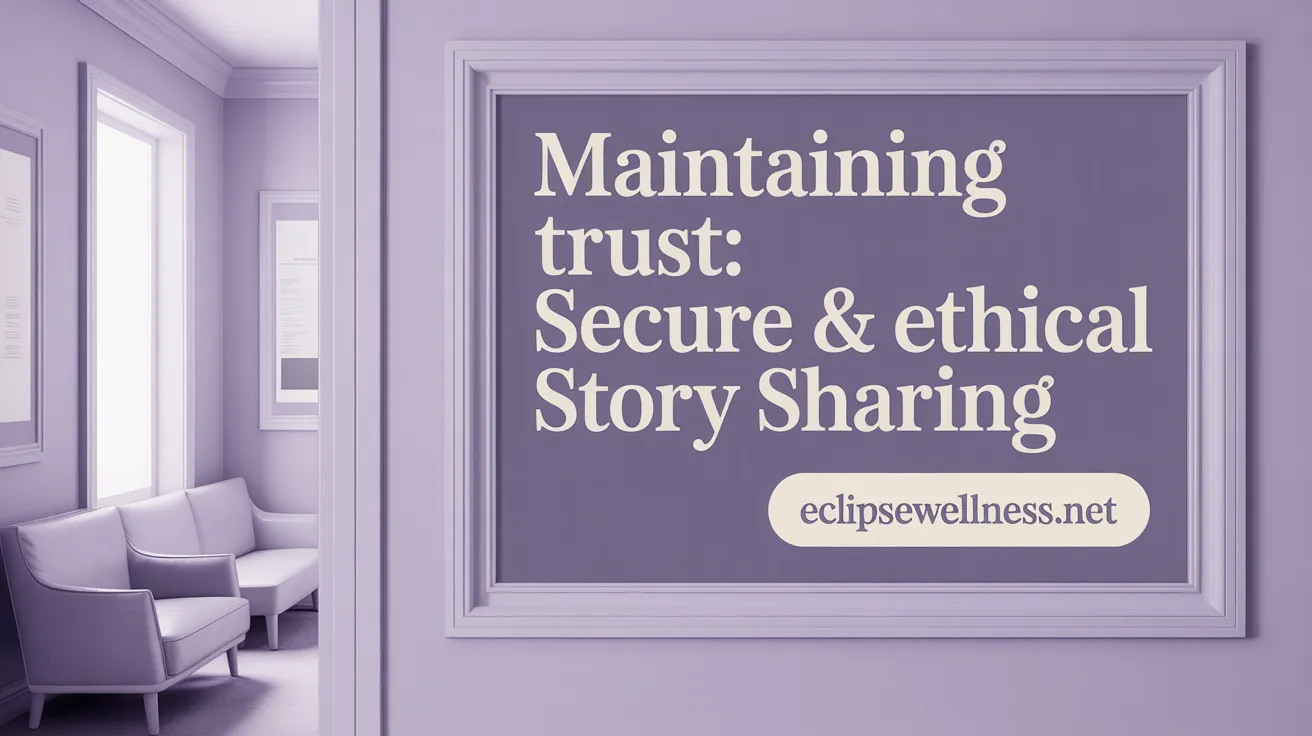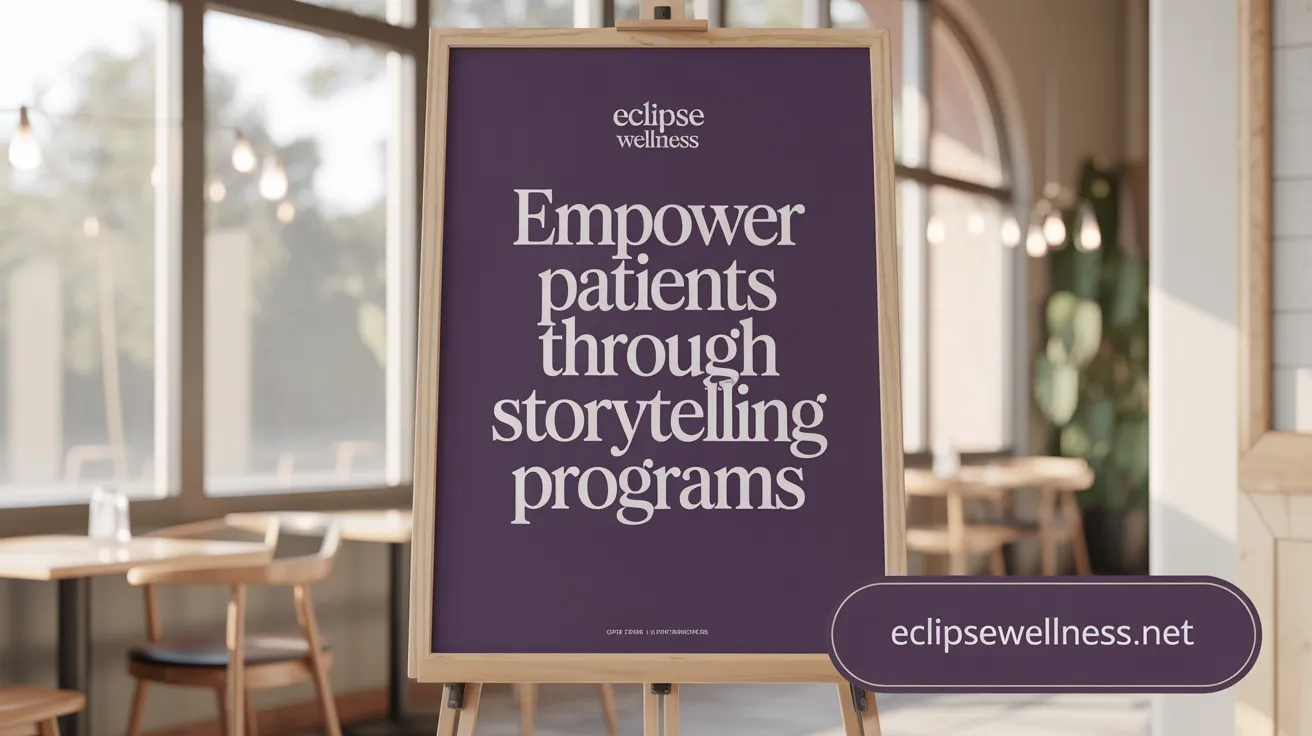The Role of Patient Stories in Modern Healthcare
Importance of patient storytelling
Patient stories serve as powerful bridges between clinical information and human experience. Sharing these narratives helps patients better understand their health conditions, reducing feelings of isolation and fostering community. These stories inspire hope and resilience, illustrating perseverance through challenges, which can motivate behavior change and a proactive approach to managing health.
Behavioral science in storytelling
Healthcare professionals increasingly apply behavioral science principles to craft patient stories that enhance memory retention and emotional connection. Stories structured with compelling hooks, obstacles, treatment impacts, and messages of hope engage multiple brain regions and trigger dopamine release, making the experiences memorable. This approach not only promotes empathy but also reduces cognitive resistance, supports informed decision-making, and helps address health disparities.
Patient engagement through narratives
Incorporating patient narratives across various platforms—such as websites, videos, and social media—significantly boosts engagement. Personal stories help patients and caregivers relate to complex medical information and feel more connected to care providers. Empathy grows within medical teams as they recognize the transformative power of patient voices, leading to more patient-centered care. Ultimately, storytelling enhances trust, supports shared decision-making, and improves overall healthcare outcomes.
The Science and Psychology Behind Patient Storytelling

How Does Storytelling Engage the Brain During Patient Narratives?
Storytelling activates multiple regions of the brain, fostering deeper engagement and emotional connection. When patients listen to or share stories, the brain releases dopamine, a neurotransmitter that enhances attention and memory retention. This means that stories are often more memorable than mere facts, helping both patients and healthcare providers remember important information that can influence health decisions (Science of patient storytelling, Brain engagement in storytelling, Patient stories and memory).
How Does Behavioral Science Enhance Patient Storytelling?
Healthcare professionals utilize behavioral science to craft patient stories that resonate and drive positive change. By analyzing narratives through this lens, they can identify the psychological elements that reduce cognitive resistance and address health inequities. Behavioral approaches help tailor stories to be more relatable, fostering trust and encouraging patients to adopt healthier behaviors (Behavioral science in patient narratives, Behavioral science in healthcare narratives, Storytelling to reduce health inequities).
What Are the Structural Elements of an Effective Patient Story?
Effective patient stories typically follow a clear structure. They begin with a hook that draws in the listener, followed by the obstacles the patient faced. The narrative then highlights the impact of treatments or interventions and concludes with words of hope or encouragement. Including personal and memorable details makes the story meaningful, promoting empathy and deeper understanding (Elements of impactful patient stories, Crafting patient-centric stories, Storytelling in patient communication.
What Impact Does Patient Storytelling Have on Outcomes and Health Behaviors?
Patient stories not only provide hope and lessen feelings of isolation but also inspire perseverance and motivate behavior change. Integrating these narratives into healthcare communication has been shown to improve patient engagement, drive better care adherence, and enhance overall health outcomes. When shared thoughtfully, patient stories become a powerful tool to bridge gaps between patients, families, and healthcare providers, supporting personalized and empathetic care (Impact of patient voice in healthcare, Patient engagement through stories, Using stories for behavioral change, Healthcare Success Stories).
Ensuring Privacy and Trust: Sharing Success Stories Responsibly

Why is HIPAA Compliance Crucial When Sharing Patient Stories?
Sharing patient success stories offers hope and human connection, but it must be balanced with stringent privacy protections to comply with HIPAA compliance in patient information. HIPAA compliance ensures that patient health information is safeguarded from unauthorized access, protecting both patients and providers. Healthcare organizations must rely on Paubox HIPAA compliant platform—such as secure email systems that encrypt PHI during transit and at rest—to maintain confidentiality when sharing these impactful stories.
How Do You Obtain Patient Consent for Sharing Their Stories?
Explicit patient consent is indispensable before any personal story sharing. Patients should be clearly informed about what information will be shared, the channels it will be published on, and the purpose behind sharing. This transparency cultivates trust while respecting patient autonomy and empowers patients to participate actively in storytelling that might benefit others, as outlined in best practices for obtaining explicit patient consent.
What Measures Help De-identify and Protect Patient Privacy?
Although removing direct identifiers like names, dates, and locations is necessary, de-identification alone does not fully eliminate privacy risks due to potential re-identification. To address this, stories can be anonymous patient stories or composite patient stories that amalgamate multiple experiences. This approach maintains the emotional power of storytelling while rigorously protecting patient identity.
Why Are Secure Platforms Important for Story Sharing?
Using secure, HIPAA-compliant platforms—such as specialized Paubox HIPAA compliant platform—is fundamental to protecting patient information from unauthorized access. These platforms uphold stringent security standards beyond typical email services, providing peace of mind for patients and healthcare teams alike. Additionally, consistent staff training on HIPAA policies and including disclaimers on patient privacy within communications uphold organizational responsibility.
Sharing patient success stories responsibly marries the power of narrative with unwavering commitment to patient privacy. This balance fosters empathy, inspires patients, and maintains ethical standards essential in patient-centered care. For more insights on this balance and the benefits of patient success stories, consult comprehensive guidance on storytelling practices in healthcare.
Inspirational Patient Success Stories Driving Healthcare Choices

Examples of perseverance in medical conditions
Inspirational patient perseverance stories vividly illustrate human resilience through diverse medical journeys. Individuals like Matthew Houder, who regained mobility after scoliosis treatment with a spinal implant, and Jenipher Musonda, whose life was transformed by fistula repair surgery, embody profound perseverance. Others, such as Angie Kohler recovering from stroke and Ntimbwe Mpamba managing HIV effectively over time, highlight ongoing commitment to health despite chronic or severe conditions.
Innovative treatments and devices
These stories often showcase cutting-edge medical innovations. Devices like the VEPTR® Vertical Expandable Prosthetic Titanium Rib used to treat scoliosis expand the chest cavity to aid lung development in children. Advances in stroke care, such as clot removal devices, exemplify technologies enabling significant recovery. Further, surgical aids like 3D virtual reality models streamline procedures, improving outcomes such as reduced operating times and blood loss.
Role of pharmaceutical and healthcare companies
Pharmaceutical and healthcare companies play a vital role by developing treatments, supporting surgeries, and funding global health initiatives. Johnson & Johnson’s partnership with the Fistula Foundation, contributing nearly $1 million towards fistula repair, highlights commitment to women’s health and childbirth-related injuries. Pfizer encourages patient advocacy by promoting health literacy and sharing empowering patient stories that foster understanding and change.
Impact on patient motivation and decision making
Personal narratives engage patients emotionally and cognitively, reinforcing health behaviors and informed decision-making. Storytelling releases dopamine and activates memory, making health information more memorable and actionable. Exposure to success stories correlates with increased patient engagement and trust, improving participation in care and adherence to treatments. Hence, personalized stories serve not just as inspiration but as transformative tools shaping healthcare choices and outcomes.
Digital and Multimedia Storytelling: Engaging Patients and Communities

Use of Videos and Serialized Storytelling
Videos bring patient experiences to life by visually narrating their healthcare journeys, making stories more relatable and emotionally impactful. Serialized storytelling, where patient stories are shared in episodes, creates continuous engagement. This format keeps audiences invested in the recovery progress, offering a comprehensive and authentic look at patient experiences over time (Serialized patient success stories; serialized patient storytelling in healthcare).
Patient Story Impact on Healthcare Reputation and Trust
Sharing patient success stories through digital media humanizes healthcare services, boosting community trust and enhancing hospital reputations. Even a slight increase in patient satisfaction, driven by compelling stories, can positively affect hospital revenue and attract new patients. These narratives foster empathy among healthcare staff, improving patient-provider relationships and reinforcing patient-centered care (Healthcare Success Stories; Patient stories in medical communications).
Engagement Increases Through Digital Platforms
Integrating patient stories on websites, social media, and webinars significantly increases patient engagement—studies show up to a 20% rise. Digital platforms enable sharing across broad audiences while respecting privacy through secure, HIPAA-compliant methods (HIPAA compliant emails). Engaged patients are more likely to participate actively in their care and feel empowered to make informed health decisions (Storytelling and patient understanding; Storytelling to reduce health inequities.
Influence on Public Health Campaigns
Patient stories have proven critical in energizing public health efforts, amplifying behavior change effectiveness by 2.5 times when incorporated into campaigns. Authentic narratives combat misinformation and hesitancy by delivering messages of hope and perseverance, encouraging healthier lifestyle choices and adherence to treatments (Healthcare Success Stories; behavioral science in healthcare narratives).
Digital and multimedia storytelling, when thoughtfully crafted and ethically shared, bridges the gap between clinical data and the human experience, advancing empathetic, patient-centered healthcare communication (The power of patient stories in medical communications; Science of patient storytelling.
Training and Empowering Patients as Storytellers

Storytelling Programs for Patient Partners
Storytelling has emerged as an influential tool in healthcare, fostering empathy and deeper understanding between patients and providers. Programs like Storytelling for Impact, adapted by the Can-SOLVE CKD Network, provide patient partners—including patients, family members, caregivers, and organ donors—with structured training to craft and share their healthcare experiences. This six-week virtual series guides participants in creating compelling narratives centered on moments of care and aimed at inspiring positive changes in healthcare research and practice.
Narrative Medicine Principles
At the core of these storytelling programs is the foundation of narrative medicine. This approach emphasizes empathy, humanistic care, and attentive listening, encouraging healthcare professionals and patients alike to appreciate the personal and emotional contexts behind medical experiences. By employing narrative medicine principles, storytellers learn to convey their journeys authentically and meaningfully, making their stories resonate on both intellectual and emotional levels.
Cultural Diversity and Inclusion in Patient Stories
Inclusivity is a vital aspect of patient storytelling initiatives. Programs intentionally highlight and support cultural diversity in patient storytelling and equitable representation, ensuring that voices from historically underrepresented and marginalized communities are heard. This commitment broadens the scope of perspectives shared, enriching healthcare conversations and helping to address disparities by acknowledging varied patient experiences as discussed in storytelling to reduce health inequities.
Transformational Impact of Sharing Personal Healthcare Experiences
Participants in storytelling programs report profound personal growth and empowerment. Sharing their healthcare journeys not only offers a therapeutic outlet but also cultivates a sense of agency and confidence. Importantly, these narratives foster awareness and change within healthcare systems, enhancing patient-centered care and promoting policies that reflect lived realities. Graduates of such programs often become story coaches themselves, sustaining and expanding the impact of this work across communities.
Empowering Healthcare Choices Through Authentic Patient Narratives
The Transformative Power of Patient Storytelling
Patient stories are far more than mere anecdotes; they are vital tools that foster understanding, inspiration, and connection within healthcare. Through engaging narratives, patients gain clarity about diagnoses and treatment journeys, while also feeling less isolated in their experiences. Storytelling activates various brain areas, releasing dopamine and enhancing memory, which helps patients absorb and retain important health information.
Integrating Stories to Enhance Patient-Centered Care
Healthcare professionals and organizations are encouraged to weave authentic patient stories into clinical conversations, educational materials, and digital platforms. Structured storytelling—highlighting personal challenges, treatments, and messages of hope—can illuminate the human experience behind medical data. This empathetic approach not only supports patients' emotional needs but also guides healthcare decisions by bridging the gap between factual evidence and lived realities.
Advocating for Ethical Innovation in Story Sharing
As the healthcare community embraces storytelling, it remains essential to uphold privacy and ethical standards. Utilizing HIPAA-compliant platforms and securing explicit patient consent ensures stories are shared responsibly. Furthermore, ongoing innovation in narrative medicine programs and digital tools promises to expand the reach and impact of patient voices. By honoring each story’s authenticity and dignity, we empower individuals to become active partners in their care and inspire broader healthcare transformation.
